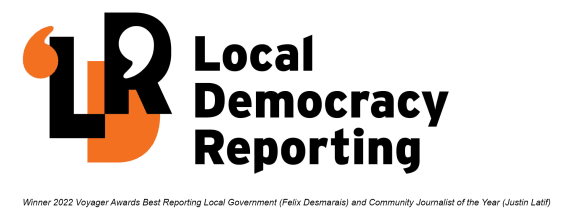
A view of the Taramakau River valley looking from Murray Stewart's Turiwhate farm towards Taramakau Settlement, at the base of the Hōhono Range in the distance. Photo: LDR / Brendon McMahon
A West Coast farmer says some of his land captured as an Outstanding Natural Landscape zone "had been gorse and is now grass".
Some landowners were recently caught by surprise when the proposed West Coast district 'one' plan deemed sections of land as Outstanding Natural Landscape (ONL).
Murray Stewart, a Taramakau Settlement farmer near Kumara, said the ONL designation over his land created a Significant Natural Area "by default", potentially restricting his family's ability to use their land.
The commissioners of the Te Tai o Poutini Plan (TTPP) - a combined district plan for the West Coast - this week started considering Outstanding Natural Landscapes.

Stewart spoke to his submission where he called for the ONL designations to be lifted from all private land.
The separate and contentious issue of Significant Natural Areas - to protect outstanding indigenous biodiversity on private land - has yet to be settled in the TTPP.
Stewart questioned what constituted the ONL values applied to his family's three farms inland from Kumara - two at Taramakau Settlement and one at Turiwhate.
"I would like all private land to be excluded from ONLs … it showed half the farm as half native bush. In fact, it had been gorse and is now grass," he said.
"Most of the mature bush around us has all been milled; the riverbeds are mainly gorse."
At his Taramakau Settlement home farm, the margin of their land bordering the protected Hōhonu Range had been selectively milled by his father about 60 years ago.
It had now regrown and it was difficult to trace where the milling had been.
Stewart said logging had been legitimately completed to finance development of their land, which now supported a multi-generation family farming operation.
Yet the original ONL draft in the TTPP described it as native "beech forest," when the closest areas of that in the district are about 40km inland, he said.
"You've got to go to Aitkens or Otira."
Stewart said witnessing tourists posing in front of weeds like ragwort and lupins for photographs illustrated just how subjective the ONL values seemed to be.
"Beauty is in the eye of the beholder," he said.
The ONL designation in the proposed TTTPP will regulate future land use in those areas through various layers of planning rules.
Most sites identified are elevated coastal or mountainous areas, although the intersection of ONLs over historic pastoral farming areas and on some Māori land has been contentious.
In mid-2023 the TTPP Committee called for a review and revised digital versions have now been released to the TTPP website.
TTPP principal planner Lois Easton told the commissioners further work was needed to refine the digitised ONL maps.
"The issue that has plagued us is the issue of scale on the ground. The digitisation (of the maps) has not been that optimal, just because of the time and cost pressures we haven't got that quite right," she said.
Easton said there was community concern but ONLs would allow earthworks for building pads, access and utilities, to half a hectare.
Existing vegetation clearance rules under the current district plans applied but the TTPP was taking a precautionary approach ahead of the SNA question.
Commissioner Maria Bartlett asked what would be built into consents to mitigate "visual scarring" from earthworks as building sites with an ONL were developed.
Easton said it was quite hard to impose monitoring conditions into consents on the West Coast as it was a question of resources.
"At the moment there is no requirement for remedial work within permitted activity … I think it would be difficult to require this in a meaningful way."
However, the natural environment tended to mitigate effects to some extent.
"When we observe the landscape on the West Coast, the vegetation grows quite fast, particularly in the bush areas of high rainfall."
Easton also referred to building development examples such as at Jackson Bay done "quite sensitively".
Te Runanga o Makaawhio chairman Paul Madgwick, who is a member of the Te Tai o Poutini Plan Committee, is also the editor of the Greymouth Star. He took no part in commissioning, writing or editing this story.
LDR is local body journalism co-funded by RNZ and NZ On Air.

